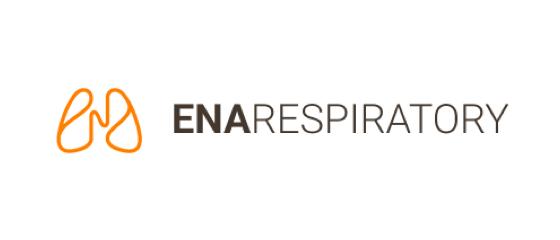-- First-in-class, fast-acting nasal spray designed to boost innate immunity against respiratory viruses including SARS-CoV-2 and its variants, influenza and the common cold at the first entry portal for most infections
-- Company is recruiting study participants in the Sydney, Australia area
SYDNEY, Australia -- ENA Respiratory, a biotechnology company developing a first-in-class nasal spray for the prevention of COVID-19 and other respiratory viral infections, announced today that it has initiated a Phase I human safety study of INNA-051, being developed to activate innate immunity in the nose, the primary entry portal of most respiratory viral infections. The fast-acting and convenient nasal spray could be used prior to or shortly after exposure to a virus, prompting the body to respond faster to protect patients from illness and reduce the chance of community spread.
“Vaccines have been slowing the spread of COVID-19 in a number of countries, but the world remains at risk with the emergence of variants with increased transmissibility, such as the Delta variant, first discovered in India. Being agnostic to specific virus or viral variant is one of the potential key features of INNA-051,” said Christophe Demaison, Ph.D., co-founder and CEO of ENA Respiratory. “As we continue to combat current and emerging variants of the virus that causes COVID-19, there is a significant need for convenient therapies that boost protection in at-risk populations such as the elderly and those with known COVID risk factors, such as obesity, diabetes and hypertension. By stimulating innate immune response, we hope to create an additional line of defense against COVID-19 and other respiratory viral infections.”
INNA-051 works by priming the innate immunity in the nasal cavity to rapidly eliminate viruses and other pathogens at the site of infection before these spread to other parts of the body.1&2 Epithelial cells that line the nasal cavity play a key role in sensing and initiating innate immune responses to respiratory pathogen threats.3 In the case of COVID-19, innate immune responses are triggered within 48 hours following virus exposure and symptom onset. By contrast, the adaptive immunity which is triggered by vaccination or virus exposure and leads to the production of neutralizing antibodies takes about two weeks to establish.4
INNA-051 has been shown in preclinical studies to be fast acting. It has the potential to reduce the time required for nasal epithelial cells to initiate the innate immune responses following virus exposure, providing an advantage to the body in its fight against the virus.
The Phase I study is a randomized, double-blind and placebo-controlled, single and multiple ascending dose study. Its goal is to investigate the safety and tolerability of INNA-051 in healthy adults ages 18 to 55 years old. The trial will also assess pharmacokinetics and pharmacodynamics of the therapy in study participants. It is being conducted at Scientia Clinical Research in Randwick, New South Wales, Australia. Amid a new outbreak of COVID-19 in the Sydney area, the organization is actively recruiting people interested in participating in the study.
Earlier research conducted by Public Health England (PHE) and published in the peer-reviewed journal EBioMedicine5 demonstrated INNA-051 reduced viral replication by up to 96 percent. If results from the gold-standard animal study are replicated in humans, INNA-051 could be used to protect against COVID-19 after exposure to SARS-CoV-2 and its variants. Non-clinical studies also suggest INNA-051 has the potential to protect against other viral illnesses, such as influenza and the common cold.
“As a broad-spectrum therapy, INNA-051 could be used in reducing illness and spread of other common viral infections that circulate in humans annually and result in millions of infections,” Demaison said. “The easy-to-use nasal spray could be helpful in protecting at-risk populations, such as the elderly or patients with chronic respiratory diseases.”
The first two cohorts in the Phase I single ascending dose study have been successfully dosed and the study is expected to be completed by Q3 2021. Recently, the company announced that it had secured an additional $24 million (AU$32 million) in funding from Brandon Capital Partners and Minderoo Foundation, with co-investment from Uniseed, to support continued development of INNA-051.
About ENA Respiratory and INNA-051
INNA-051 is a potent innate immune agonist that targets the receptor TLR2/6. It is being developed for intranasal delivery to target the primary entry site of viral respiratory infections as most respiratory viruses, including SARS-CoV-2 and influenza, initially infect and replicate in nasal mucosal epithelial cells which express TLR2 and TLR6 on their surface. Topical nasal administration of INNA-051 and close analogues have been shown in pre-clinical studies to protect treated animals from SARS-CoV-2 (causative agent of COVID-19), influenza virus (flu) and rhinovirus (common cold) infections. Key features of INNA-051 intranasal administration include limited minimal or no systemic bioavailability, minimal or no systemic pro-inflammatory cytokine release, no direct type I interferon upregulation, durable immune response supporting twice-weekly administration and compatibility with vaccine and intranasal corticosteroids.
For more information, please visit https://enarespiratory.com
References:
- Girkin, J et al. TLR2-mediated innate immune priming boosts lung anti-viral immunity. European Respiratory Journal. 2020. 2001584; DOI: 10.1183/13993003.01584-2020
- Deliyannis, G. et al. TLR-mediated activation of innate responses in the upper airways confers antiviral protection of the lungs. JCI Insight. 2021. 6(5):e140267. https://doi.org/10.1172/jci.insight.140267
- Hewitt, R.J., Lloyd, C.M. Regulation of immune responses by the airway epithelial cell landscape. Nat Rev Immunol. 2021. 21, 347–362 https://doi.org/10.1038/s41577-020-00477-9
- Vetter, P et al. Daily Viral Kinetics and Innate and Adaptive Immune Response Assessment in COVID-19: a Case Series. mSphere. 2020. 5 6. https://doi.org/10.1128/mSphere.00827-20.
- Proud PC et al. Prophylactic intranasal administration of a TLR2/6 agonist reduces upper respiratory tract viral shedding in a SARS-CoV-2 challenge ferret model. EBioMedicine. 2021 Jan;63:103153. doi: 10.1016/j.ebiom.2020.103153. Epub 2020 Dec 3.


